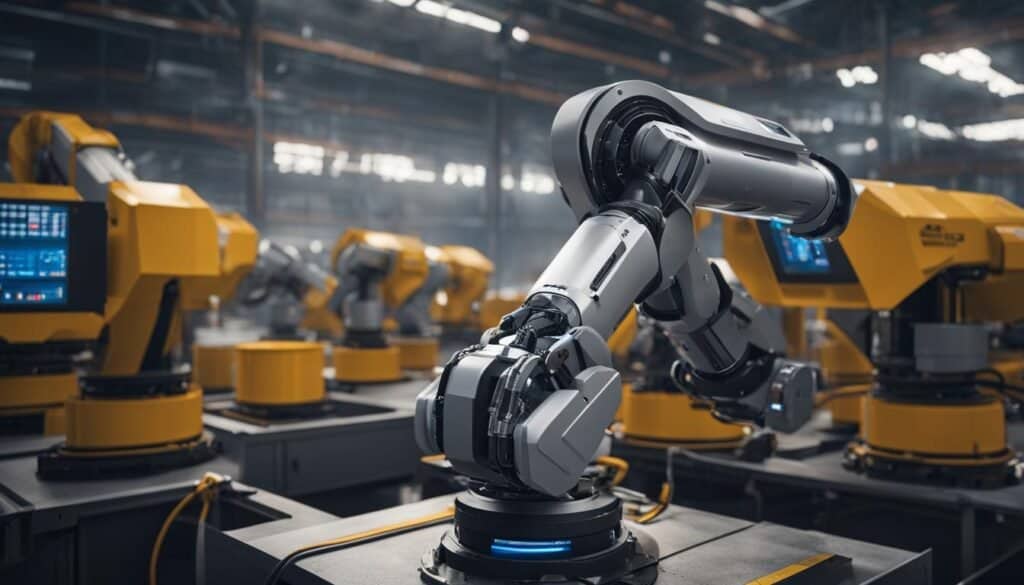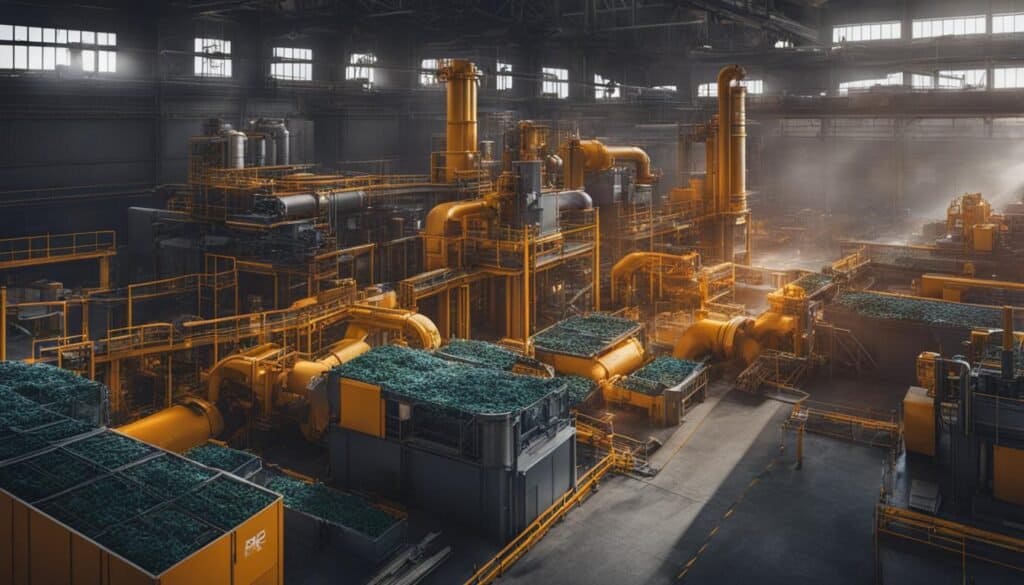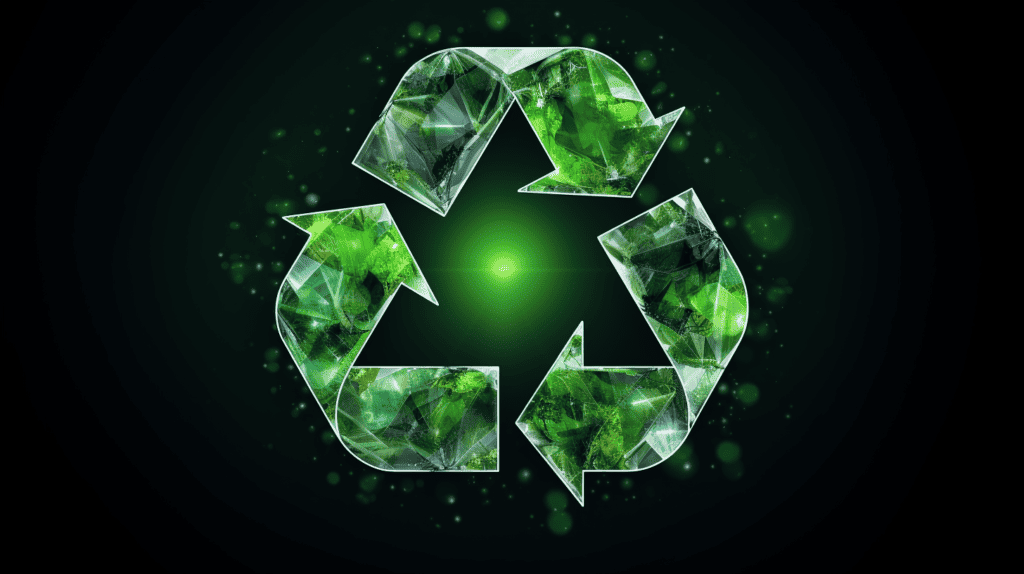The rapid growth of global waste has urged industries to explore more sustainable production methods driven by the principles of a circular economy. The adoption of zero-waste industrial manufacturing systems can revolutionize global waste management by focusing on resource efficiency, waste reduction, and closed-loop systems that enable environmental sustainability and facilitate economic growth. By integrating these systems with community value and finite resources reuse, industries can create a more prosperous and responsible future for all.
Key Takeaways
- Transitioning to a circular economy addresses the global waste management crisis.
- Zero-waste industrial manufacturing can strengthen environmental sustainability and improve economic growth.
- Resource efficiency and waste reduction are crucial elements of sustainable production processes.
- Implementing closed-loop systems benefits industries and communities alike.
- Applying circular economy principles helps maximize the value of finite resources through reuse and recycling.
The Urgency of Transitioning to Zero-Waste Manufacturing
The imperative of transitioning to zero-waste manufacturing is underscored by the mounting environmental challenges faced globally. Nations are being confronted with the repercussions of inefficient linear economies, with the majority of waste historically ending up in landfills, the ocean, or elsewhere in the environment.
IfM Engage: Adopt a ‘lean’ approach by considering all types of waste across the factory, including overproduction, time, transportation, processing, inventory, movement, defective products, and underutilized workers.
The result is an unsustainable impact on our natural ecosystems. There is a pressing need to reconceptualize waste handling, aiming for a comprehensive reduction and subsequent utilization of byproducts as resources, in line with circular economy ideals.
Central to sustainable waste management and achieving a successful circular economy is the recognition of the following vital elements:
- Eco-design
- Landfill avoidance
- Sustainable manufacturing practices
- Environmental protection
- Waste minimization
- Material consumption reduction
Currently, we face a global waste crisis that necessitates immediate and effective action. A study by the World Bank Group estimates that global municipal solid waste (MSW) will surge to 3.4 billion tonnes by 2050 if waste management practices don’t evolve. As such, it is crucial to adopt strategies that foster waste reduction and promote a more sustainable relationship with our environment.
This challenge is further emphasized by the alarmingly low recycling rates worldwide. For instance, the United Nations Environment Programme estimates that only 9% of all plastic waste has been recycled to date, with the rest accumulating in landfills or making its way into our oceans.
To reverse the global waste crisis and conserve finite resources, our industries must increasingly align with the principles of circular economy transition. This entails harnessing closed-loop systems, integrating eco-design, and adopting sustainable manufacturing practices as the norm rather than the exception.
“There is no such thing as ‘away’. When we throw anything away it must go somewhere.” – Annie Leonard, American Proponent of Sustainability
In conclusion, embarking on a zero-waste manufacturing journey is an indispensable step towards addressing the environmental and resource challenges we face today. By acknowledging the urgency of this transition and committing to sustainable waste management practices, we can work together to create a healthier planet and a more resilient global economy.
Understanding Zero-Waste Manufacturing (ZWM) Principles
In an industrial context, zero waste goes beyond merely reducing waste—it embodies the elimination of waste throughout the full value chain, promotes recycling, and re-manufacturing. The aim is for waste to be viewed as a potential resource, with each byproduct recycled or repurposed. This reimagining of waste transforms manufacturing from a source of pollution to a cyclic, resource-efficient system.
Defining Zero-Waste in an Industrial Context
Zero-waste principles in an industrial environment focus on integrating waste-to-resource and process efficiency into industrial waste management systems. By doing so, industries can progress toward sustainable production processes by embracing circular economic models, solid waste reduction, and zero-waste goals. Such a transition paves the way for industrial ecology and manufacturing sustainability.
Material efficiency, waste recovery, and reuse strategies play a crucial role in achieving waste reduction and clean production. These approaches, combined with recycling techniques, composting, remanufacturing, and product lifecycle management, set the foundation for effective zero waste certification.
Core Elements of Zero-Waste Manufacturing Systems
Zero-Waste Manufacturing (ZWM) involves a holistic approach that integrates waste reduction processes with recovery, reuse, and remanufacturing strategies. Emphasizing efficient material usage in production and encouraging recycling, composting, and repurposing, these systems strive for a “cradle to cradle” design philosophy, where end-of-life products are reincorporated as inputs for new manufacturing processes.
“Cradle to cradle” design philosophy aims to eliminate waste totally by planning product lifecycles such that materials can be perpetually recycled or safely composted back into the earth.
These practices lead not only to environmental benefits like pollution prevention but also drive forward clean production. Some core elements of ZWM systems include:
- Material efficiency
- Process efficiency
- Waste recovery
- Reuse strategies
- Recycling techniques
- Composting
- Remanufacturing
- Product lifecycle management
- Cradle to cradle design
- Zero waste certification
- Pollution prevention
- Clean production
A comprehensive understanding of these principles allows industries to align with zero-waste goals and contribute significantly to the broader movement towards sustainable manufacturing, further enhancing their reputation as responsible participants in the creation of a more sustainable future.
Case Study: Singapore’s Strides Towards a Zero-Waste Nation
Singapore’s dedication to becoming a zero-waste nation offers a compelling case study, demonstrating its resilience in the face of ever-increasing waste quantities. Building on a robust sustainability blueprint, Singapore’s strategies center on optimizing waste collection, management, recycling, and disposal systems, ensuring resources are treated efficiently and sustainably.
By relying heavily on waste-to-energy plants and its single offshore landfill, Semakau Landfill, Singapore highlights the urgency for innovative solutions in waste and landfill space management, as it anticipates the landfill’s max-out by 2035. Alongside these challenges, the country’s manufacturing sector expansion, backed by Industry 4.0 technologies such as automation and data exchange in manufacturing, has proven critical to Singapore’s GDP and job market growth while striving for waste reduction and recovery across multiple supply chains.
Urbanized recycling plays a significant role in Singapore’s waste management, with comprehensive programs in place for residential, commercial, and industrial sectors, to ensure efficient recycling practices. Meanwhile, the country’s waste-to-energy plants make use of high-temperature incineration to convert waste into energy, thereby reducing landfill usage. This process produces incineration bottom ash, which is treated, combined with construction waste, and reused as new landfill material in a sustainable manner.
| Year | Total Waste Generated (tonnes) | Total Waste Recycled (tonnes) | Recycling Rate (%) |
|---|---|---|---|
| 2015 | 7,670,000 | 4,770,000 | 62.4 |
| 2016 | 7,810,000 | 4,890,000 | 62.6 |
| 2017 | 7,700,000 | 4,720,000 | 61.2 |
| 2018 | 7,800,000 | 4,630,000 | 59.3 |
The table above illustrates Singapore’s waste generation, recycling rates, and waste recycling figures from 2015 to 2018. Despite the consistent efforts to increase recycling, there is still substantial room for improvement, especially in the context of a growing population and manufacturing industry.
“Our approach to building a sustainable Singapore is captured in the Sustainable Singapore Blueprint, which outlines our national vision and plans for a livable and endearing home, with a cohesive and resilient society that is prepared to meet future challenges”. – Ministry of the Environment and Water Resources (MEWR), Singapore.
In conclusion, Singapore serves as a beacon in its pursuit of zero-waste solutions and sustainable waste management, incorporating innovative technologies and strategies such as waste-to-energy plants and incineration bottom ash reuse. This case study showcases the country’s unwavering commitment to its zero-waste vision, with continued progress in managing waste at both the individual and industry levels. As a nation, Singapore sets itself as a promising example of how change can be achieved through a holistic, targeted approach to waste reduction and recovery.
The Role of Industry 4.0 in Advancing Zero-Waste Manufacturing

Industry 4.0, representing the latest industrial revolution, interconnects advanced technologies and manufacturing systems into a dynamic network, enabling self-governance and process optimization. The synergistic integration of computers, automation technology, and smarter production leads to improved waste management, resource efficiencies, and economic performance.
The Intersection of Advanced Technologies and Waste Reduction
The fusion of advanced manufacturing technologies and zero waste strategies within Industry 4.0 helps minimize waste generation and maximize resource efficiency across production processes. Key components of this innovative approach include:
- Cyber-physical systems: Seamless integration of computing and physical processes that enhance real-time waste monitoring and enable feedback loops for waste reduction.
- Networked manufacturing: Interconnected machines and processes that share information to optimize waste management, reduce material consumption, and streamline production.
- Sensor-based waste audits: Precise monitoring of waste generation to identify reduction opportunities and implement targeted strategies.
- Lean manufacturing: Continuous improvement methodologies that seek to minimize waste, reduce costs, and promote efficiency in manufacturing processes.
These Industry 4.0 technologies, when combined with effective stakeholder collaboration, can revolutionize waste management practices in manufacturing.
Zerowaste.com: Foster collaboration with other stakeholders in the manufacturing sector to find innovative solutions for waste recovery and reuse, turning waste into valuable resources for new products or processes.
Industry 4.0 and its advanced technologies have the potential to revolutionize waste management and significantly reduce manufacturing waste.
Real-world examples demonstrate the transformative power of Industry 4.0 in advancing zero-waste manufacturing. Singapore’s government has committed USD 2.4 billion towards research and development in this space, propelling the industry towards a more sustainable future. By leveraging these technologies, manufacturers can minimize their environmental impact and maximize economic performance.
| Advanced Technology | Waste Reduction Benefit |
|---|---|
| Cyber-physical systems | Real-time monitoring and feedback for waste elimination |
| Networked manufacturing | Interconnected machines and processes optimizing waste management |
| Sensor-based waste audits | Identification of waste reduction opportunities and targeted strategy implementation |
| Lean manufacturing | Continuous waste minimization and process improvement |
Embracing Industry 4.0 and its advanced technologies is a crucial step in adopting zero-waste manufacturing practices. As we strive to build a cleaner and more sustainable world, it is imperative to maximize resource efficiency and minimize waste in every aspect of the manufacturing process. By harnessing the power of Industry 4.0, we can significantly reduce waste and contribute positively to global environmental sustainability.
Revolutionizing Industrial Symbiosis for a Circular Economy

As the world embraces the concept of a circular economy and its benefits, industrial symbiosis emerges as a crucial approach to optimize resource utilization and encourage sustainable practices. Industrial symbiosis involves creating interconnected systems in which waste from one process serves as an input for another. This innovative approach ensures reduced waste, supply chain synergies, and environmental innovation, all fostering a transition from isolated waste management efforts to integrated waste valorization pathways.
High-value mixed waste processing is essential in promoting circular business models that rely on eco-industrial principles. This allows industries to convert traditionally unwanted by-products into valuable new resources, supporting waste valorization and recycling. By sharing resources and collaborating, industries can further enhance their economic opportunities while embracing sustainable industrial practices.
Industrial symbiosis optimizes resource utilization and initiates a transition from isolated waste management efforts to integrated valorization pathways. It revolutionizes how industries perceive and handle waste, creating a greener future and bolstering circular economy benefits.
A crucial aspect of advancing industrial symbiosis is the establishment of collaborative platforms that enable companies to share resources, information, and best practices. Such platforms facilitate the development of symbiotic relationships between industries, fostering resource sharing, and supply chain synergies.
| Industrial Symbiosis Components | Benefits |
|---|---|
| Resource Sharing | Reduction of waste generation, economic advantages via efficient use of materials, and improved environmental performance |
| Supply Chain Synergies | Streamlined business operations, cost savings, and enhanced cooperation between businesses |
| Environmental Innovation | Reduced pollution and greenhouse gas emissions, improved air and water quality, and better waste management practices |
| Economic Opportunities | New revenue streams via waste valorization, cost savings from shared resources, and a competitive advantage in sustainable markets |
Supporting the growth of industrial symbiosis helps drive the transition toward a circular economy while simultaneously generating numerous economic and environmental benefits. By reimagining waste as a resource and fostering collaboration between industries, we can pave the way to a sustainable future that aligns with the principles of a circular economy.
Challenges in Achieving Zero-Waste in Urbanized Settings

Accomplishing zero waste in highly urbanized regions poses unique challenges due to higher per capita waste generation and limited space for disposal or recycling facilities. Technological adaptations that accelerate waste reduction are vital, but may face hurdles in dense city environments. The case study of Singapore illustrates the need for identifying technical challenges and developing strategies to overcome these and fulfill zero waste objectives in urban settings.
Urbanization and waste generation are closely linked. Rapidly growing cities generate vast amounts of solid waste, creating significant challenges for sustainable city planning and urban waste management. Local governments and private sectors must jointly address high-density waste issues such as hazardous materials, e-waste, and vast amounts of plastic packaging to minimize urban waste and ensure the well-being of residents and the environment.
Realizing a zero-waste urban environment requires a concerted effort from multiple stakeholders to identify and overcome zero-waste implementation barriers.
To better illustrate the complexities involved in urban waste management, let’s explore some of the key challenges and potential solutions for attaining zero-waste goals:
- Space constraints: Limited availability of suitable land for waste disposal or recycling facilities hampers progress in densely populated cities. Utilizing vertical space or repurposing existing buildings for waste processing can be helpful in overcoming this challenge.
- Population density: Growing urban populations increase the demand for goods and services, leading to higher waste generation. Encouraging businesses to adopt eco-friendly packaging, promote waste reduction, and prioritize waste recovery within their supply chains can help minimize waste at its source.
- Waste technology adaptation: The integration of advanced waste technologies may face operational and financial obstacles in urban settings. Raising awareness on the benefits of these technologies and providing financial incentives for their adoption can help stimulate uptake.
- Infrastructure development: Developing sustainable waste management infrastructure requires significant investment and planning. Public-private partnerships, as well as green financing options, can support such initiatives.
Strategies for successful zero waste initiatives in urban settings include:
- Promoting circular economy and waste-to-resource models to transform waste streams into viable resources.
- Enhancing public awareness and engagement through educational campaigns, community-based waste reduction programs, and incentives for waste segregation and recycling.
- Adopting evidence-based waste reduction policies at the local and regional levels.
- Stimulating innovation in waste technology and digital waste management solutions.
In conclusion, overcoming the challenges associated with urban waste management and achieving zero waste in densely populated cities requires a comprehensive approach that leverages technological advancements, fosters collaboration among stakeholders, and integrates sustainable waste management strategies into city planning. By identifying the barriers that hinder progress and developing solutions tailored to urban environments, we can move closer to realizing a circular economy in our urban landscapes.
Implementing the Zero-Waste Framework: A Six-Pronged Approach

Implementing a zero-waste framework in the manufacturing process requires a combination of design innovation and strategic planning. This article will focus on two crucial aspects of this approach: Design for Zero Waste and Smart Waste Audit and Reduction Planning.
Design for Zero Waste
At the heart of the zero-waste manufacturing concept is the integration of zero-waste design principles, sustainable product design, and life cycle assessment. These elements, combined with the inclusion of eco-industrial parks and the pursuit of dematerialization, contribute to eco-friendly manufacturing processes and the reduction of waste throughout the entire production system.
The goal is to create a seamless transition from product usage to renewal, utilizing eco-friendly materials and design innovations that facilitate disassembly and recycling. This philosophy results in a sustainable product life cycle and the conservation of valuable resources.
Smart Waste Audit and Reduction Planning
To optimize waste management and achieve production system efficiencies, it is essential to conduct smart waste audits and develop comprehensive waste reduction plans. These plans involve several methodologies and technologies, such as:
- Zero-waste certification
- Waste stream mapping
- Waste audit technology
- Material flow analysis
- Waste minimization strategies
By carefully evaluating and developing these strategies, manufacturers can identify opportunities for increased efficiency and waste reduction throughout their operations. This approach also allows for ongoing improvement and adjustment as waste generation and management evolve over time.
| Key Components of Smart Waste Audit & Reduction Planning | Benefits for Zero-Waste Manufacturing |
|---|---|
| Zero-Waste Certification | Provides a standardized measurement and validation system for waste management performance |
| Waste Stream Mapping | Visualizes waste generation and flow to optimize resource use and minimize waste disposal |
| Waste Audit Technology | Enables accurate tracking and assessment of waste generation and management across various process stages |
| Material Flow Analysis | Identifies material usage trends and inefficiencies, driving targeted improvement efforts |
| Waste Minimization Strategies | Incorporates best practices and innovative technologies for reducing waste generation and disposal |
In conclusion, adopting the zero-waste framework is an essential step towards sustainable industrial manufacturing. By implementing innovative design principles and strategic waste reduction planning, companies can significantly reduce their environmental impact while achieving greater operational efficiency and profitability.
Waste To Resource Conversion: Closing the Loop on Industrial Waste
Transforming waste into valuable resources is the essence of establishing a closed-loop system that feeds back into production cycles. By adopting circular economy practices and embracing technologies for high-value mixed waste processing, businesses can leverage waste outputs as inputs for new products or energy. This contributes significantly to closing the waste loop and creating sustainable waste solutions.
Waste-to-resource conversion can be achieved through diverse methods such as industrial recycling, resource conservation, composting, and repurposing. Industrial recycling involves converting waste materials into usable raw materials or products, while resource conservation focuses on the efficient and responsible use of natural resources. Composting is a sustainable solution for organic waste, turning it into nutrient-rich soil conditioner. Finally, repurposing entails finding new uses for waste materials without significantly altering their original form.
By adopting zero-waste manufacturing and circular economy practices, companies not only minimize their environmental impact but also capitalize on the wealth of resources offered by their waste.
Resource recovery plays a crucial role in accomplishing waste-to-resource conversion. Innovative technologies facilitate the efficient extraction and reprocessing of materials from waste streams that would otherwise be discarded.
- Optical sorting and robotics in recycling facilities can accurately identify and separate waste materials for recycling.
- Mechanical and chemical recycling techniques help recover high-quality materials from complex waste streams, such as mixed plastics and textiles.
- Composting technologies can expedite the breakdown of organic waste while producing valuable soil amendments.
Implementing waste-to-resource conversion strategies provides a multitude of benefits, including cost savings, resource efficiency, and environmental protection. Furthermore, it supports the transition towards a circular economy, an economic system that prioritizes the continuous cycle of resources while minimizing waste and environmental impact. These benefits emphasize the importance of embracing sustainable waste solutions and resource recovery approaches as essential components of zero-waste manufacturing.
Measuring Success: Metrics and KPIs for Zero-Waste Manufacturing
In order to gauge the effectiveness of zero-waste manufacturing efforts, it is essential to evaluate the environmental and economic benefits achieved. Utilizing precise metrics and key performance indicators (KPIs) to assess these outcomes enables a comprehensive understanding of a company’s performance in waste reduction and resource conservation.
Let’s discuss the critical parameters that can help reveal the environmental and economic advantages of zero-waste practices.
Assessing Environmental and Economic Benefits of ZWM
- Waste Reduction Measurements: These metrics track the amount of waste reduction resulting from zero-waste initiatives, including solid waste and hazardous waste.
- Resource Efficiency Indicators: An effective means to compare input resources utilized (such as water, energy, and materials) and their corresponding output in terms of waste reduction and product quality.
- Sustainability Reporting: Comprehensive disclosure and communication of an organization’s waste management strategies, environmental performance, and progress toward zero-waste objectives.
- Eco-Efficiency Analysis: A quantitative approach to assess the ratio of environmental and resource impacts to the overall value produced, illuminating areas for improvement in material and energy efficiency.
- Green Chemistry Metrics: The evaluation of processes and products within the context of resource conservation, minimized waste generation, and reduced environmental impact.
- Production Cost Savings: Analyzing the financial benefits derived from waste reduction and resource efficiency, including cost savings in material and energy consumption, waste disposal, and regulatory compliance.
It is essential to regularly monitor and analyze these metrics and KPIs to share valuable insights on the achieved environmental, social, and economic benefits of zero-waste manufacturing processes.
| Metrics and KPIs | Description | Example |
|---|---|---|
| Waste Reduction Rate | Percentage reduction of waste generated from manufacturing processes | Reduction of 20% solid waste generation in a year |
| Energy Efficiency | Amount of energy consumed per unit of output or production | 5% decrease in energy consumption per product manufactured |
| Virgin Material Use | Quantity of virgin materials used in manufacturing processes | 15% reduction in virgin material use through increased recycling and waste recovery |
| Recycling Rate | Percentage of waste materials recycled from manufacturing processes | Increase in recycling rate from 30% to 45% in a year |
Adopting a comprehensive approach to evaluate the success of zero-waste manufacturing systems requires consistent and methodical monitoring and reporting. By adopting these metrics and KPIs, industries can understand their performance and continue to refine and improve their waste reduction strategies to achieve a truly sustainable, circular economy.
Encouraging Public-Private Partnerships in Waste Management
Waste management is a crucial component of transitioning to zero-waste manufacturing. The promotion of public-private partnerships is integral to successful waste management strategies, combining the strengths of both governmental oversight and private sector innovation.
Such collaborations forge a robust foundation to drive broader adoption of zero-waste practices, fuel research and development, and support community-led sustainability initiatives. Moreover, they ensure a coordinated and impactful approach to waste reduction by leveraging diverse perspectives and resources offered by stakeholders.
Public-private partnerships are the cornerstone of a comprehensive waste management strategy, bringing together the best of government and industry.
Government initiatives play a pivotal role in waste management, as they provide the necessary regulatory framework and incentives for businesses in this sector. Effective waste policies, extended producer responsibility, and take-back programs are some examples of government efforts in promoting zero-waste practices.
On the other hand, private companies’ involvement in waste management ranges from supply chain management to technology development, offering innovative solutions and sharing best practices. Together, governments and businesses can create successful partnership models in waste reduction, yielding lasting and impactful results.
Some key factors essential for successful public-private waste management collaborations include:
- Stakeholder engagement: Open communication and dialogue between businesses, government entities, and communities fosters trust and facilitates effective collaboration.
- Community outreach: Raising awareness and providing education on sustainable waste management practices encourages public participation and inspires local action.
- Financial incentives: Government subsidies, tax breaks, and grants can stimulate private sector investment in waste management infrastructure and technologies.
- Regulatory frameworks: Policy development and enforcement ensure that both public and private entities adhere to established waste management standards and regulations.
By synergizing the efforts of both public and private sectors, waste management collaboration can lead to significant advancements in zero-waste manufacturing processes and accelerate the transition to a circular economy.
Conclusion on Zero Waste Manufacturing
As we strive towards realizing circular economy achievements, the rapid progression of zero-waste advancements allows the industrial sector to undergo a sustainable transformation. The shift from a linear to a circular model greatly impacts global waste management solutions, while simultaneously promoting a zero-waste lifestyle for a cleaner and more ecologically responsible future.
By focusing on environmental impact reduction through efficient manufacturing processes and waste minimization, businesses can foster responsible resource usage while further solidifying their commitment to protecting our planet. This is made possible by embracing innovative technologies, collaborative efforts, and smart resource handling throughout the entire product life cycle.
As we work to advance global waste solutions, the principles and practices of zero-waste industrial manufacturing systems offer a promising path to a resilient future for manufacturing, society, and the environment as a whole. Embracing these changes, both on an individual level and as part of a more extensive industry collaboration, ensures that our future generations can continue to thrive on a sustainable and resource-efficient planet.
FAQ on Zero-Waste Industrial Manufacturing Systems
Q: What is zero-waste industrial manufacturing?
A: Zero-waste industrial manufacturing is a philosophy and approach that aims to minimize waste production and prevent it from being sent to landfills. It involves implementing techniques and systems to significantly reduce waste in manufacturing facilities.
Q: How does zero-waste industrial manufacturing contribute to a circular economy?
A: Zero-waste industrial manufacturing contributes to a circular economy by promoting sustainable and efficient use of resources, recycling materials, and minimizing waste, thus enabling a more sustainable and environmentally friendly approach to global waste management.
Q: What are the benefits of implementing a zero-waste manufacturing system?
A: The benefits of implementing a zero-waste manufacturing system include reduced environmental impact, cost savings through improved resource efficiency, and a positive contribution to sustainability goals.
Q: How can manufacturing companies transition towards zero waste production?
A: Manufacturing companies can transition towards zero waste production by setting clear goals for waste minimization, implementing sustainable manufacturing techniques, and integrating zero-waste principles into their operational processes.
Q: What role does solid waste management play in zero-waste industrial manufacturing?
A: Solid waste management is crucial in zero-waste industrial manufacturing as it involves the proper management and disposal of waste to achieve the goal of zero waste and minimize the impact on the environment.
Q: What can manufacturing facilities do to go zero waste?
A: Manufacturing facilities can go zero waste by adopting sustainable practices, recycling materials, reducing waste at the source, and rethinking their production processes to align with the principles of zero-waste production.
Q: How does zero-waste industrial manufacturing address waste from landfills?
A: Zero-waste industrial manufacturing addresses waste from landfills by aiming to minimize the production of waste that would otherwise end up in landfills, thus reducing the environmental burden associated with landfill waste.
Q: What role does additive manufacturing play in zero-waste industrial manufacturing?
A: Additive manufacturing, also known as 3D printing, can play a role in zero-waste industrial manufacturing by enabling more efficient use of materials, reducing waste from traditional manufacturing processes, and promoting sustainable production methods.
Q: How can zero-waste industrial manufacturing help in reducing plastic and food waste?
A: Zero-waste industrial manufacturing can help in reducing plastic and food waste through innovative recycling processes, waste prevention strategies, and the adoption of sustainable packaging and production practices.
Q: What are the key steps in implementing a zero waste system for manufacturing facilities?
A: The key steps in implementing a zero waste system for manufacturing facilities include conducting a waste audit, identifying areas for waste reduction, setting measurable goals for waste minimization, and integrating sustainable practices into the production processes.





Leave a Reply